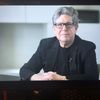Click here to watch the TEDTalk that inspired this post.
Watching Nick Veasey's TED Talk, "Exposing the Invisible", I am captured by the intersection between technology and art, something Veasey does quite well.
Veasey has taken a very high-tech field, in which he is an expert, radiography, and turned it into an artform in its own right. What makes it so compelling is that through the use of what was designed as a 'functional technology', he alters the way that we see the world. He also re-defines how a technology, invented for one purpose can in fact be the parent of another end.
Radiology is a complex technology, requiring expensive equipment and complex gear - not all that different from photography in the 19th Century. Like radiography, 19th Century photography required a complex set-up, dangerous chemicals and a deep understanding of the science behind it.
Through the use of what was designed as a 'functional technology', he alters the way that we see the world. He also re-defines how a technology, invented for one purpose can in fact be the parent of another end. -- Michael Rosenblum
As well, 19th Century photography was seen far more as a 'functional technology' than as an artform in its own right. The main purpose was to record 'important events' or 'important people'. Often a once- in-a lifetime experience, like having your portrait done.
Take a look at old photographs of your grandparents' or great grandparents' (you probably have them in some box in the attic somewhere). See how they sit, rigid and formal before the camera. Having your picture taken was in many ways akin to having your leg X-rayed (sit still, don't move, one exposure or perhaps two or three). This was what the complex and expensive technology wrought - a very formal and stiff occasion.
All of this changed for photography in the 1930's when the Leica company replaced large and heavy 'view cameras' with small, hand-held cameras. At the same time, the Agfa company released an entirely new kind of film - 35mm plastic rolls with multiple exposures. The days of sitting stiffly and formally before a heavy camera with a single piece of sheet film in it were over.
This made photography vastly simpler, but it had a much deeper impact. Now, for the first time, photographers were freed from the expensive gear, the lights, the studio. They were able to move freely with their cameras and take multiple exposures. They could visit exotic place. The entire process, the mechanics of photography, was changed. And so was the product. Photographs became more intimate, more immediate and far more powerful.
In effect, photography, which had been a 'functional technology' with very specific ends, became an art form in its own right.
This did not happen quickly.
In 1955, The Museum of Modern Art opened an exhibit entitled The Family of Man, curated by Alfred Stieglitz; the culmination of this technological change.
Stieglitz has long been credited as the man responsible for having photography seen as an artform, and his artistic work certainly preceded the invention of Leicas; but it was with the arrival of that far simpler and cheaper technology that photography, as an artform, came into its own.
Today, there are more than 1.2 billion 'smart phones' in circulation around the world. Almost all of them today have video cameras that are High Def. They are extremely simple to use - as the 100 hours of video uploaded to Youtube every minute(!) clearly shows. For a few dollars anyone can download video editing software that is extremely simple to use.
Film-making and television production today are still the domain of the very few- still considered complex and expensive. Only for the 'professional'. But watching TV, there is clearly room for improvement (!). One can only wonder if smart phones might do for television and films what Leicas did for photography - to take it from functional technology to art form.
We don't generally think of television as an 'art', (far from it); but then again, who thought of x-rays as 'art' either.
Ideas are not set in stone. When exposed to thoughtful people, they morph and adapt into their most potent form. TEDWeekends will highlight some of today's most intriguing ideas and allow them to develop in real time through your voice! Tweet #TEDWeekends to share your perspective or email tedweekends@huffingtonpost.com to learn about future weekend's ideas to contribute as a writer.
